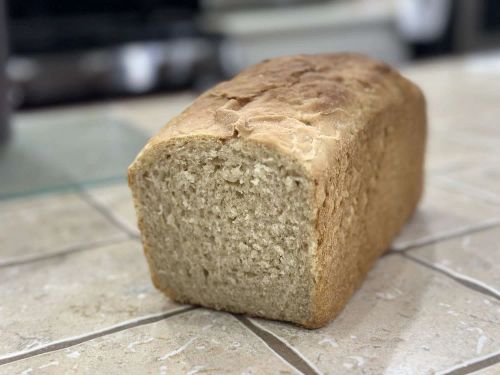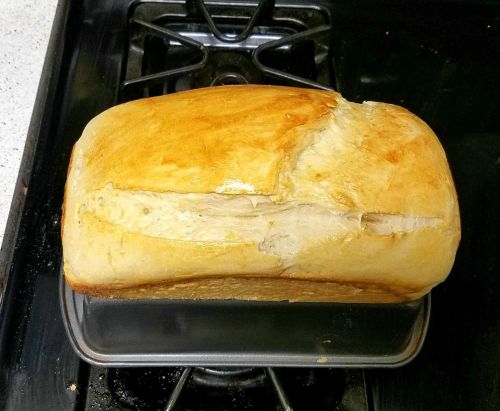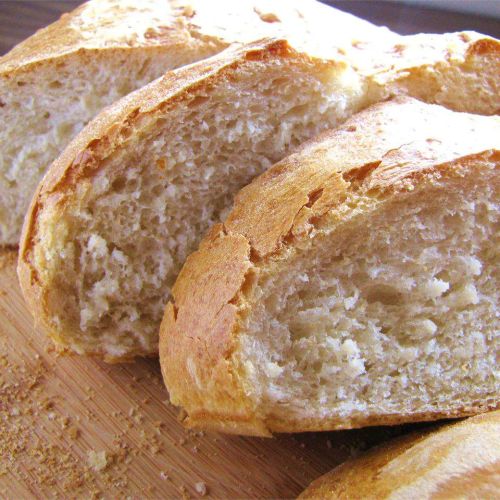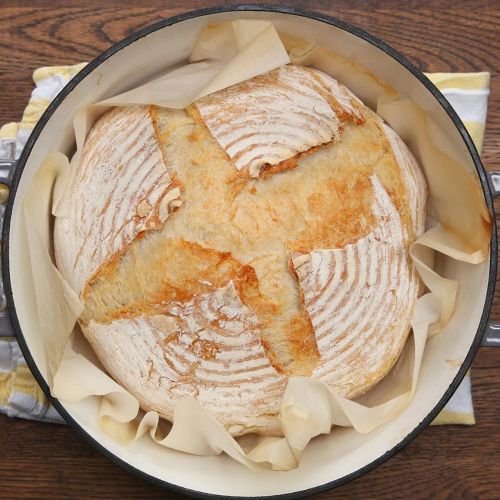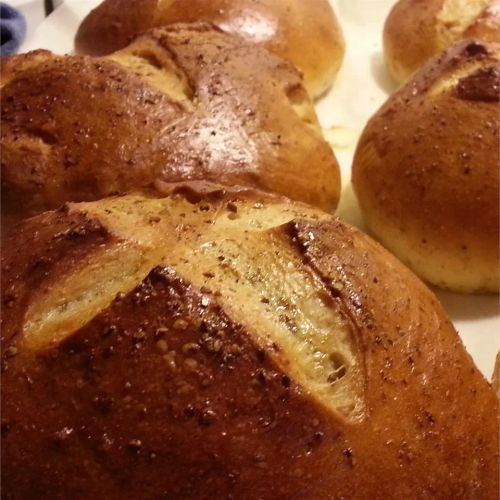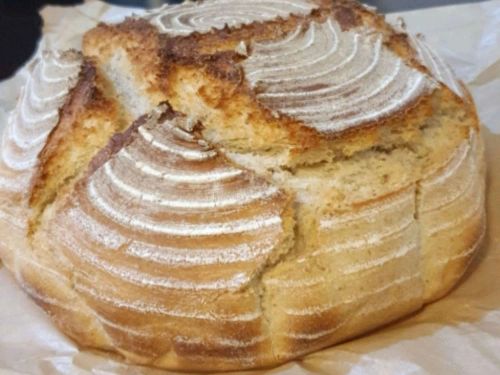
Ingredients
1 servings
- •1 ⅔ cups warm water, plus 1 tablespoon, divided, plus more for dipping
- •½ cup mature active
- •3 cups bread flour, or all-purpose flour, plus more for dusting
- •⅔ cup whole wheat flour, or all-purpose flour
- •1 tablespoon kosher salt, plus ¼ teaspoon
- •food scale, or measuring cups
- •bench scraper
- •proofing basket, or medium bowl lined with cotton towel
- •dutcch oven, or cast iron pan or combo cooker or loaf pan
- •sharp paring knife of bread lame
Instructions
- Autolyse: Add 400 grams of warm water and the sourdough starter to a medium bowl. Stir with a rubber spatula to dissolve the starter.
- Add the bread flour and whole wheat flour. Use a spatula or your clean hands to mix until combined and there are no dry spots. Cover with a clean cotton kitchen towel and let sit in a warm place for 60 minutes.
- Bulk fermentation: After resting the dough, add the salt and remaining 10 grams water. Use your hands to incorporate the salt, squishing the dough through your fingers to make sure it is evenly distributed.
- Set a bowl of water nearby. Once the salt is incorporated, dip your hand in the water to prevent sticking. Use your wet hand to stretch the dough from the edge of the bowl upwards, then fold toward the center. Repeat a total of 8 times, rotating the bowl slightly after each fold.
- After the folds, carefully lift the dough up, flip it over, place it back in the bowl and tuck the edges under the dough. Scrape down the edges of the bowl, then cover with the kitchen towel and let rest in a warm place for 60 minutes.
- Repeat the stretching and folding process 2 more times, waiting 60 minutes after each folding session before beginning again. You should see signs of fermentation in the form of an increase in volume and bubbles along the edges and top of the dough. Wait a little longer, up to 30 more minutes between folds, if you don’t see those signs yet.
- Preshape: An hour after the final stretch and fold, dip your hands in the water. Think of the dough as the face of a clock. Slide your hands into the bowl at 3 o’clock and 9 o’clock. Partially lift the dough from the bowl and let it fold under itself. Rotate the bowl and repeat the lifting and fold under 5-6 times, until dough has begun to come together in a ball.
- Carefully lift the dough onto a clean surface. Lightly sprinkle the dough with the dusting flour. Using a bench scraper, or lightly floured hands, carefully rotate and drag the dough towards yourself along the surface, building tension until you have a round, taut ball of dough. Do not make the ball too tight, as it may tear. Lightly flour the dough, cover with the towel, and let rest for 30–40 minutes.
- Final shape: Dust a proofing basket or a medium bowl lined with a cotton towel lightly with flour.
- After 40 minutes, the dough should look relaxed and have spread out slightly. Lightly flour the top of the dough again. Using the bench scraper, or a silicone spatula and lightly floured hands, carefully flip the dough over, so the unfloured part is facing upwards.
- Think of the clock again. Fold in 12 o’clock towards the center, then 6 o’clock, 3 o’clock, and 9 o’clock, then each of the remaining 4 diagonal corners. Carefully transfer the dough, seam-side up, to the prepared proofing basket or bowl. Pinch the seams to ensure they are sealed. Cover the bowl with the towel.
- Final proof: Transfer the dough to the refrigerator to finish proofing overnight, 12–18 hours. If you want to bake the same day, leave at room temperature for 2–3 hours, then transfer to the refrigerator while you preheat the oven. (Overnight proofing is highly recommended!)
- When you are ready to bake, preheat the oven to 500°F (260°C). Place a Dutch oven or cast iron combo cooker in the oven while it preheats. Make sure your oven has come up to temperature before baking, at least 30 minutes.
- Prepare a piece of parchment paper about the size of the bottom of your baking vessel. Place the parchment over the proofing basket and gently flip the basket over so the dough drops onto the parchment.
- Carefully remove the baking vessel from the oven. Use the parchment paper to carefully lift the dough into the pan. Use a sharp paring knife or bread lame to slash the top of the dough a few times. This scoring will allow steam to escape. Cover the vessel with the lid and carefully place in the oven.
- Bake for 25 minutes, then remove the lid and reduce the oven temperature to 450°F (230°C). Continue baking for another 15–20 minutes, until the crust is amber brown.
- Remove the bread from the oven and carefully transfer to a wire rack. Check to make sure it is done baking by tapping on the bottom--you should hear a hollow sound. Though it may be tempting to dive right in, let the bread cool completely, at least 2 hours, before slicing with a serrated knife.
- Store the loaf cut-side down on a cutting board, or in a plastic bag. You can freeze the whole loaf, or pre-slice, then freeze and pull out slices as needed.
- Notes: If you are using all-purpose flour, use 375 grams of water instead of 400 grams of water for the initial mix. If you don’t have a Dutch oven or cast iron combo cooker, you could bake in a cast iron skillet, a pizza stone or a sheet pan, uncovered. You could also bake the bread in a greased 9 x 5-inch (22 x 12 cm) loaf pan (place the bread in the pan seam-side down instead of in a proofing basket.) Bake at 475°F (240°C) for 40–45 minutes, until amber brown. Reduce the oven temperature for the last 20 minutes of baking if the bread is getting too dark on top. The bread won’t look as shiny and have as crispy of a crust, but will taste just as good!
- Enjoy!
